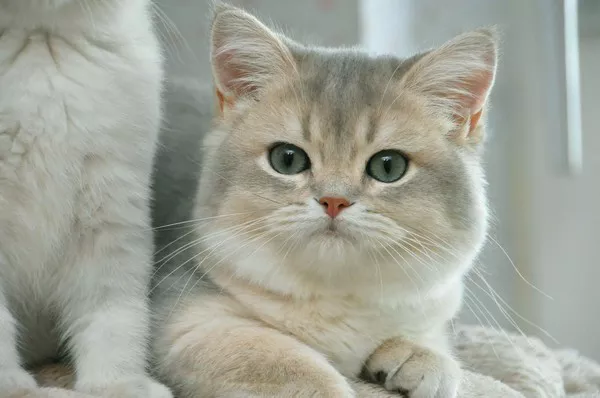The companionship of a Himalayan cat brings joy and warmth to many households. However, when a beloved feline friend shows a lack of interest in food, it can be concerning for pet owners. Various factors can contribute to a Himalayan cat’s diminished appetite, ranging from underlying health issues to environmental stressors. In this comprehensive article, we explore the potential reasons behind a Himalayan cat not eating, offering insights into common causes, possible health concerns, and practical tips for encouraging a healthy appetite.
Normal Eating Behavior in Cats:
Cats, including Himalayans, typically exhibit consistent and predictable eating habits. They are known for being discerning eaters, and any significant deviation from their usual behavior may signal an underlying issue. It’s crucial for pet owners to pay attention to their cat’s eating patterns, as changes in appetite can be early indicators of health concerns.
Common Reasons for a Himalayan Cat Not Eating:
1. Stress or Anxiety:
Cats are sensitive creatures, and changes in their environment can induce stress or anxiety. Events like moving to a new home, the introduction of a new pet, or changes in the household routine can impact a Himalayan cat’s appetite. Providing a calm and secure environment is essential to help alleviate stress-related eating issues.
2. Dental Problems:
Dental issues, such as gum disease or toothache, can make eating painful for cats. Himalayans, with their distinctive flat faces, may be more prone to dental problems. Regular dental check-ups and providing dental-friendly food or treats can contribute to oral health.
3. Medical Conditions:
Various medical conditions can lead to a loss of appetite in cats. Gastrointestinal issues, kidney disease, liver problems, or infections may affect a Himalayan cat’s eating habits. If a cat refuses to eat for more than 24 hours, it’s crucial to consult a veterinarian for a thorough examination.
4. Food Preferences:
Cats can be quite particular about their food preferences. Changes in the brand or type of food, or even subtle alterations in the food’s temperature, can influence a Himalayan cat’s willingness to eat. Experimenting with different food options while ensuring they meet nutritional requirements can help find a suitable choice.
5. Hairballs:
Long-haired breeds like the Himalayan are more prone to hairballs, which can cause discomfort and reduce appetite. Regular grooming and incorporating hairball remedies into their diet can help manage this issue.
Health Concerns and Warning Signs:
While occasional changes in appetite may be normal, persistent refusal to eat requires careful attention. Warning signs that warrant prompt veterinary evaluation include:
Weight Loss: Noticeable weight loss over a short period can indicate underlying health issues.
Lethargy: A lack of energy or increased sleepiness may be a sign of illness.
Vomiting or Diarrhea: Digestive issues can contribute to a cat’s reluctance to eat.
Changes in Behavior: Unusual behavior, such as hiding or increased irritability, can be indicative of distress.
Tips for Encouraging a Himalayan Cat to Eat:
Provide a Quiet Eating Space:
Cats appreciate quiet and undisturbed eating environments. Place food bowls in a calm area away from loud noises or other pets to create a stress-free dining space.
Offer Palatable Food:
Experiment with different cat food brands and textures to find options that appeal to your Himalayan cat’s taste preferences. Some cats may prefer wet food over dry, or vice versa.
Maintain Consistent Feeding Times:
Establishing a regular feeding schedule helps create predictability for your cat. Consistency in meal times can contribute to a stable routine, promoting a healthy appetite.
Warm the Food:
Cats often prefer food at room temperature or slightly warmed. Gently warming wet food or adding warm water to dry kibble can enhance its aroma and make it more enticing.
Consult with a Veterinarian:
If your Himalayan cat’s lack of appetite persists or is accompanied by concerning symptoms, seek professional veterinary advice. A thorough examination can help identify any underlying health issues.
Preventive Measures for Long-Term Health:
Regular Vet Check-ups:
Schedule routine veterinary check-ups to monitor your Himalayan cat’s overall health and address any emerging issues promptly.
Dental Care:
Implement a dental care routine to prevent oral health problems. This may include regular brushing, dental treats, or special dental diets recommended by your veterinarian.
Hairball Management:
Incorporate hairball remedies or specialized diets designed to minimize hairball formation. Regular grooming also helps prevent excessive hair ingestion.
Hydration:
Ensure your cat has access to fresh water at all times. Maintaining hydration is crucial for overall health and can contribute to a healthy appetite.
Conclusion:
A Himalayan cat not eating is a cause for concern that necessitates careful attention and proactive measures. Understanding the potential reasons behind a cat’s diminished appetite, recognizing warning signs, and implementing practical tips can contribute to the well-being of your feline companion. Regular veterinary care, a balanced diet, and a nurturing environment play pivotal roles in maintaining the health and happiness of Himalayan cats, ensuring they thrive as beloved members of the family.

























